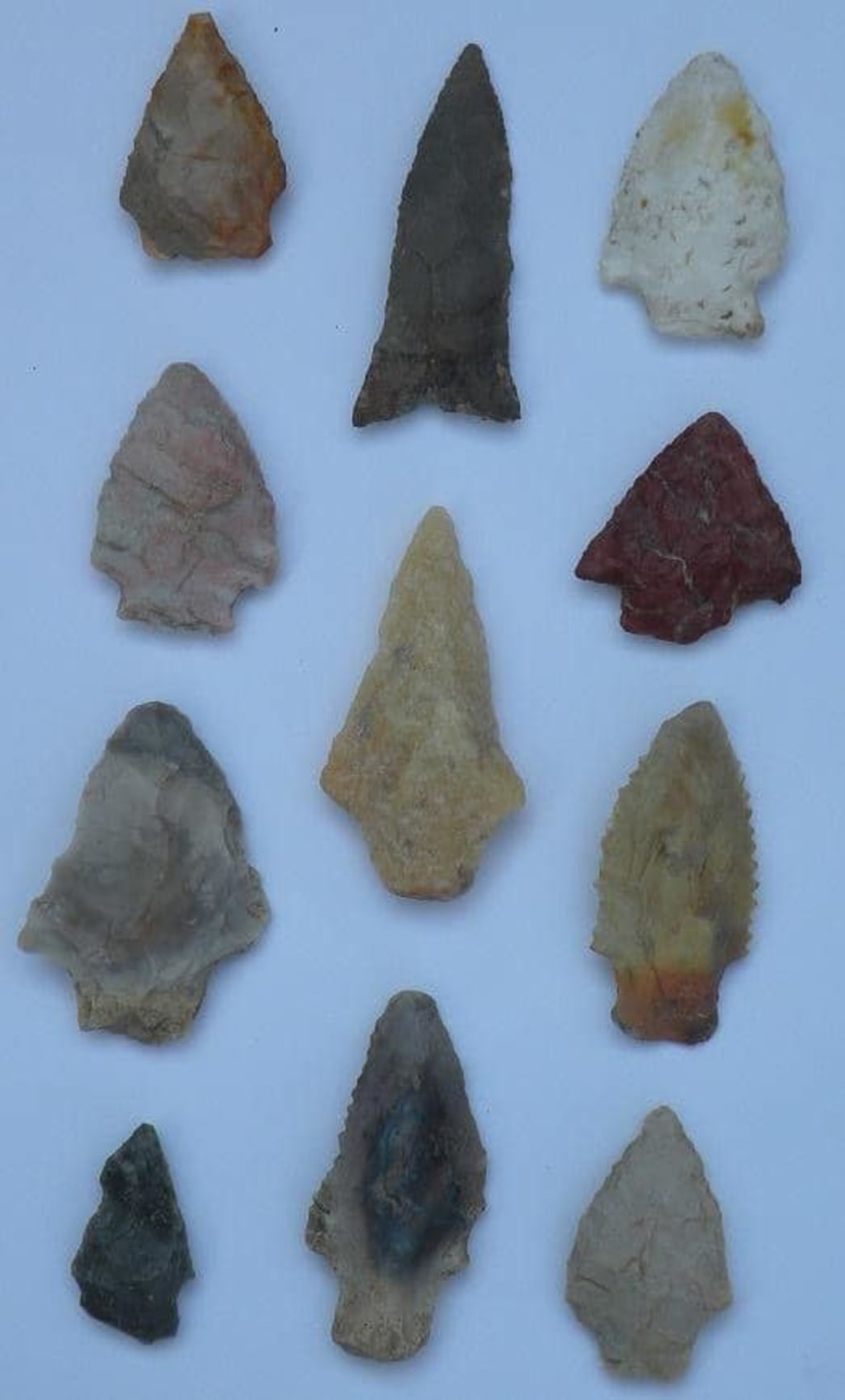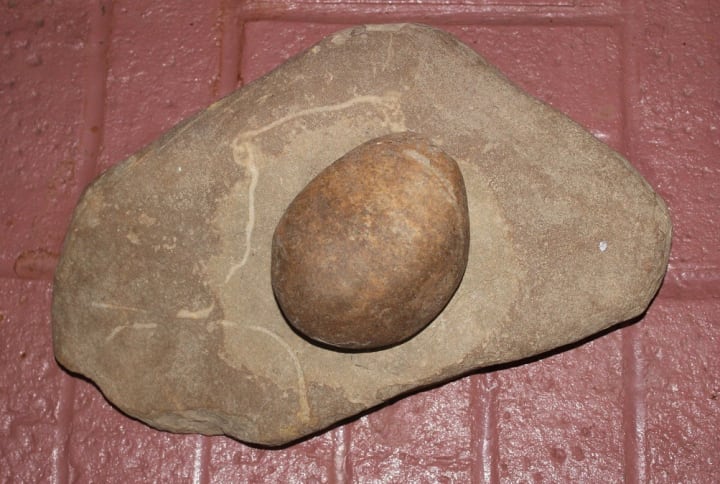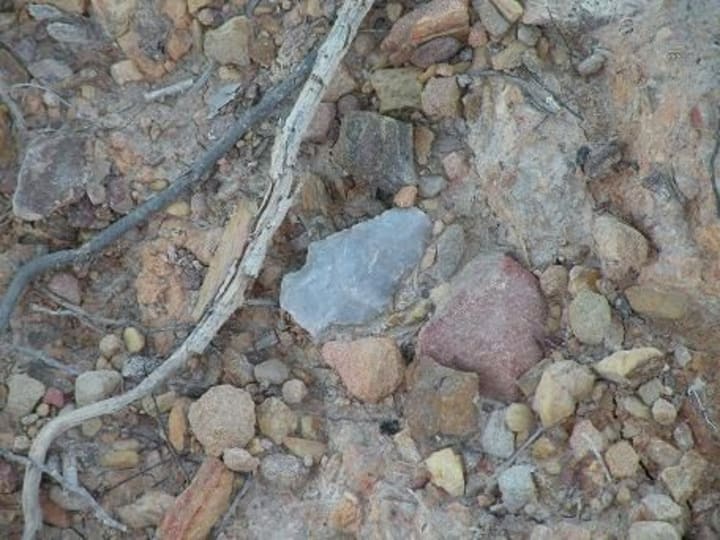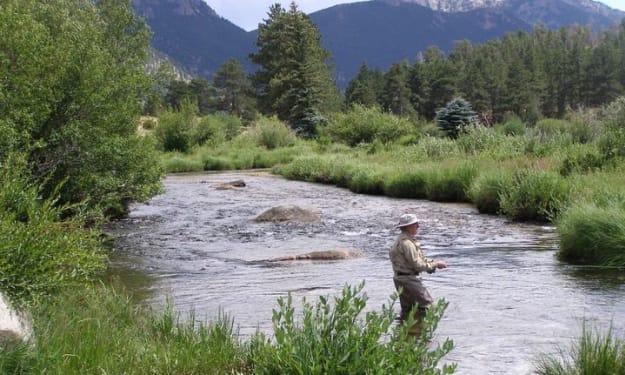Native American Artifacts: Interview with Steve Valentine
Tips to be a successful arrowhead hunter from one of the best.

I picked up a couple dozen arrowheads and several other prehistoric Native American Indian artifacts when I was a kid, mostly just stumbling across them because I was in the woods so much. I have always enjoyed reading and collecting history, so that frame of arrowheads always meant a lot to me.
About twelve years ago, I made up my mind to spend as much time as it took to learn how to find arrowheads when I wanted to find them. I found that there were some expert prehistoric Native American artifact hunters who were happy to share their knowledge. Steve Valentine is at the top of that list.
Steve, how did you get involved in the hobby of hunting and collecting prehistoric Indian artifacts?
My father got me started when I was very young, around 5 or 6 years old. He always took us on a family outing every Sunday and he would let us boys choose what we wanted to do. One day we couldn’t make up our minds so he said he would take us arrowhead hunting, so my two brothers and I headed off with dad to try our hand at finding some.
Dad took us to a place he had hunted when he was a kid and gave us the basics of what to look for and the first hour or so we all found flint chips while dad was finding a few arrowheads. I was walking beside my father when I looked down and saw my first arrowhead. I yelled, “Look Dad, there’s one.” I picked it up and was just amazed at what I had just found, and my passion for the hobby was born. That first little damaged point started a hobby that has spanned 45 years and will continue for hopefully many more years to come.

A lot of people take a break from their hobbies and pick it up again at some point in their lives. Has your level of interest for prehistoric Native American artifacts ever faltered?
No, not really. Once I found that first point, I was hooked. Whenever it was my turn to pick what we would do on our Sunday outings I always chose hunting for arrowheads as long as the conditions were right. After I got my driver’s license and didn’t need to be driven anywhere, I went every chance I could, and my passion for finding artifacts has never waned. I still try to go at least once a week and sometimes more than that in the spring right after the first plow.
Do you have other family members who collect prehistoric Indian artifacts?
I have one brother who also collects. He wasn’t really all that interested in them when we were younger and usually complained when I picked arrowhead hunting for our Sunday trips. He would find a few though, and I would end up with everything we found because I was the oldest, and they all knew I would take care of them. After my brother married a lady whose father had also collected he began to collect artifacts himself and has built up a fairly decent collection. He doesn’t have near the amount I have, but he does have some nice pieces.

I hunt prehistoric Native American artifacts myself, and I am in awe of your collection. I know you haven't kept an exact count, but do you have an estimate of the number of pieces in your collection?
I tried counting my collection a few years back and I got up to around 12,000 pieces and I quit counting and never finished. I would estimate I have somewhere in the neighborhood of 15,000 pieces, counting everything. That would include Scrapers, Points, Blades, Beads, Stone Tools, Bone Tools, Hammerstones, etc.
I would venture to guess I have around 10,000 arrowheads and 5,000 of “everything else” like the things I mentioned above. As for the number of personal finds, I would say around 90% to 95% of that is personal finds. I keep telling myself that one day I will get an actual count of my collection but finding the time and the patience is hard to do.
If it was touched by a prehistoric Native American, I bring it home, but if I had a collection like yours, I might start leaving some where they are. As your collection began to grow over time, did you grow more discriminating regarding what you put in your collection?
Sort of. I still try to bring almost everything I find home, especially if it is a worked piece. I have gotten to the point though that I don’t bring home Pottery Shards unless they are a Rim Shard or a decorated piece. I was getting box after box of shards and had to quit bringing them home or I was going to run out of room.

I do the same thing with Hammerstones now as well. Unless it’s a really nice Hammerstone I don’t bring them home. I will usually pick them up and take them to the side of the field and put them on a fence post or someplace where someone will see them so they can have them if they want it. I do bring home every worked piece of flint I find, no matter what size or what it is. If it’s worked, it’s coming home with me.
You mentioned some of the items in your prehistoric Indian artifact collection other than arrowheads. Tell us more.
About 20 years ago I met a guy in the field that became one of my best friends. He introduced me to hunting Fort Ancient village sites and showed me how to hunt for items other than arrowheads. These sites produce lots of Shell and Bone items like Beads, Pendants, Bone Awls, Deer Antler Arrowpoints and Flakers, Pottery items, Discoidals, and Pipes.
I have hundreds of Beads now and lots of Bone Tools and other items made from Bone and Shell. I also find a lot of Stone Tools like Axes, Celts, Pestles, Chisels, Hammerstones, and Grooved Mauls. I have found a few Pipes and just found one of my best ever this spring. I also find lots of Drills and Scrapers. Scrapers are very abundant on sites and you can pick up a pocketful very quickly.
I'm sure it would have to be something beyond special, but I have to ask, "Do you have a favorite prehistoric Indian artifact in your collection?"
It would be really hard to pick just one favorite find. I have a few points that are nice and are in almost pristine condition and they are special to me. I also just found a nice ¾ Grooved Axe on December 17th of last year that was special find.
I guess if I had to pick just one it would have to be the Pipe I just found in April of this year. It is made from a very fine-grained sandstone and is in pristine condition. There isn’t a scratch, nick, or mark on it. It is in the same exact shape as when it was made, and it was a surface find. The best part about it though is it is an Effigy Pipe. It has a mouth cut into the bottom of the Pipe and if you turn it upside down it looks like a baby bird waiting to be fed.

Keeping up with all your prehistoric Indian artifacts must be difficult; I've seen the photos. I have a small collection compared to yours, and sometimes I have trouble locating things. How do you do it?
I have almost everything I own setting out on display either in a Riker mount, a wooden tray, on a shelf, or in a showcase. Most of my collection is marked showing where it was found. I also do site trays which means everything in the tray is from the same site, so I don’t have to mark the individual pieces. Having everything in a tray or on a shelf in a showcase makes it a lot easier to keep track of, plus I can go out to my artifact room and look at it all any time I want without having to drag a bunch of pieces out of a closet, which is nice.
I would enjoy this hobby if my finds were monetarily worthless, but a lot of people see dollar signs behind every collectible. What kind of changes have you seen over your collecting life regarding monetary values for authentic prehistoric Native American artifacts?
I think it has ruined the aspect of collecting just for the fun of it and to find nice pieces. Now everyone wants to know what something is worth. To me they are all priceless works of art. I love taking my artifacts to shows and displaying them for others to see, but it never fails that someone will come by and ask the value of a piece or make me an offer that I must refuse and sometimes repeatedly.
I also don’t believe in authenticating artifacts for the purpose of selling. You see these papers on eBay and at shows that “so and so” says an artifact is real. Just what makes them an expert? I have seen pieces that were deemed authentic by these so-called experts that I wouldn’t touch with a 10-foot pole.

I remember a few years before he died that Greg Perino was fooled by a flintknapper with some fake Clovis Points, so even the experts can be wrong. Don’t get me wrong, I will buy a piece on occasion but only if I think it’s good and not because it has a paper with it and I usually only buy from someone I know or from the person that found the piece. I have, however, never sold a piece. I have given a few away to kids and friends, but never sold any.
How have increased values for prehistoric Indian artifacts changed the marketplace.
I think the prices have gone up because some people have more money that they have sense. I have seen things go for completely outrageous prices at auctions and I think that helps drive up the price on other pieces. EBay has helped flood the market with fakes because the average Joe who just wants some artifacts for his or her office or home are buying them as real and don’t know any better. Then after they die or decide they don’t want them anymore they are resold or passed down through the family and no one knows they are fake.
The high prices have also hurt the hunters as well because now people think every arrowhead is worth a fortune, so the fields are full of people trying to find them and sell them. I remember a time when I could spend most of the day and never see another hunter, but now if you aren’t at a popular hunting spot at the crack of dawn then you will find a site that has been overrun by hunters there before you. I have one field I hunt that I used to hunt all day by myself and this spring I counted 17 people in there at one time. The high prices have turned a fun hobby into a money-making bonanza for some people.

What impact has the Internet had on the hobby of hunting and collecting prehistoric Native American artifacts?
The Internet has been a double-edged sword for the hobby. On one hand it has helped bring together a lot of people with similar interests from across the United States and even the world. People who otherwise would have never met can now go to numerous web sites and converse about a hobby we all have a passion for, show our latest finds off for others to see, and to see artifacts from other parts of the country we probably never would have seen if not for the internet.
Just like this interview, if not for the Internet we never would have met, and I wouldn’t be doing this interview and sharing my interest with other people. On the other hand, it has hurt the hobby with sites like eBay that flood the market with fakes. It has also given access to thieves who surf the web looking for collections so they can do their best to steal them. So, I guess you can say it has been good and bad for the hobby, but in my mind more good than bad.
Tell us what makes a site prime for hunting prehistoric Native American artifacts.
A lot of different things go into finding a good site for looking for artifacts. Most sites are located near a water source of some kind whether it be a river, creek, spring, or lake. They had to have fresh water for cooking, drinking, and bathing plus the abundance of fish and game that would be available.
It has been my experience over the years that the best sites are usually located at the confluence of a river and stream on a high ridge above the flood plain. You may find a few scattered artifacts in the bottoms where it floods but for the most part the best hunting is on the high ridges where the camps would be. Finding these good sites can be hit and miss. You may see a spot that looks like it would be a prime candidate for finding artifacts only to walk it and find nothing while another site not far away will yield tons of artifacts.
What are some misconceptions people have regarding the hobby of hunting and collecting Native American artifacts and the Native Americans who made them?
A lot of novices think of “Cowboys and Indians” when they see Indian artifacts. I have had several people ask me what tribe something came from, and I must explain that most of what we find is prehistoric and has no association with any of the known tribes. They don’t realize that these people were in this country 10,000 to 15,000 years ago and only think about the Indians that are depicted on TV and in movies that roamed the plains and were put into reservations.

Others think that we are grave robbers and that we go out and dig up mounds and cemeteries to get our artifacts. They don’t realize that you can go out and walk a plowed field after a hard rain and pick artifacts up off the surface of the ground. Very little of my collection has been found by digging and even then, I was only digging in middens and trash pits, not mounds or graves. Digging is too much like work and unless you get into a prime spot you can find a lot more by surface hunting.
What suggestions do you have for someone who would like to start hunting prehistoric Indian artifacts?
If a person is serious about trying to find Indian artifacts it’s not that hard finding out info on where to get started. You can go to your local library and research your area for Indian sites, camps, and mounds. Any plowed fields in those areas should produce artifacts. You can also ask around and see if anyone in your area is already pursuing this hobby and see if they will give you a few pointers. Grooved Axe Indian. One of the best ways I have found of finding new sites is by hopping in the car and driving out in the country looking for plowed fields and then stopping at the farm and asking the farmers if they ever found any artifacts in their fields. You would be surprised how many will say that they have.
Once you find a spot that has produced artifacts you can try to get permission from the farmer to hunt his fields and give it a try. That is one thing I can’t stress enough. Always obtain permission first before going on someone's property. It’s not like it was 20 or 30 years ago when you could just walk out into a farmer’s field and they knew what you were doing and didn’t say much. Nowadays everyone is suspicious of just what you might be doing, and some farmers will shoot first and ask questions later, so always get permission first. Once you get permission look the area over and pick a spot on high ground near a water source and hit it first. Look for flint chips, pieces of bone, shell, or pottery and if you find these concentrated in one spot then you may have found a site and start hunting it a row at a time.
Try not to wander through the field willy-nilly because you will miss a lot of things. Try to hunt it a row at a time going back and forth about 5 to 10 feet apart on each pass. When you first start out you are going to need to check every piece of flint or rock you spy to see if it is anything. Once you get accustomed to what you are looking for you will know just what to pick up and what to leave alone.
Also, something that will really help you out and keep your back from getting sore from bending over all day is to get yourself a long stick, preferably an old broom handle, and put a nail in the end of it to flip out pieces you see. This also makes a good walking stick and will come in handy if a dog tries to get a little aggressive you can bop him on the nose and send him on his way.
I hope this interview helps pique an interest in this hobby in a few people and they learned a few things about collecting Indian artifacts. Maybe we’ll see each other in a field somewhere or meet at a show, but until then "Happy Hunting" everyone.
Thank you, Steve, for being so generous with your time.
__________
With practice, Steve's tips for finding prehistoric Native American artifacts will be productive anywhere in the country.
About the Creator
Bill Coleman
Hello! I am a traveler, outdoorsman, and writer.






Comments
There are no comments for this story
Be the first to respond and start the conversation.